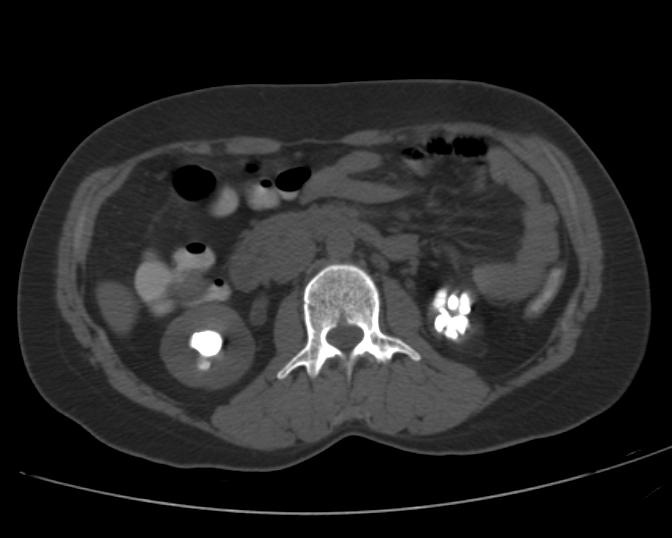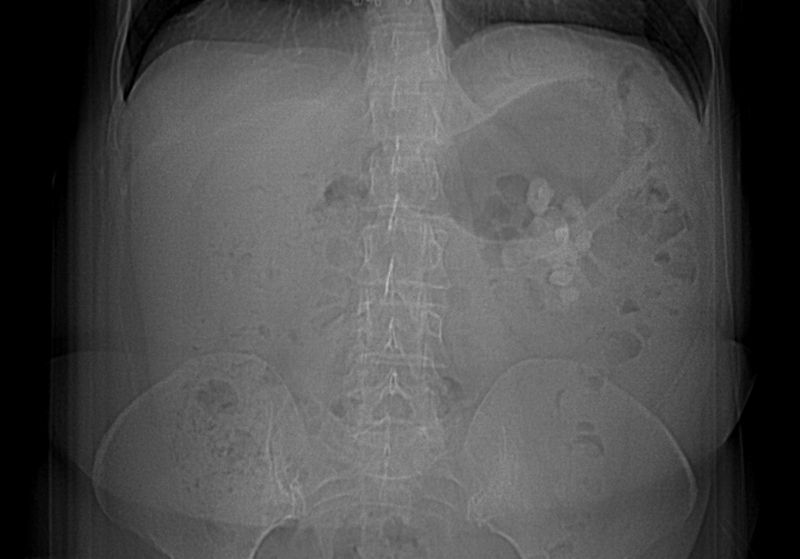Kidney stone CT: Difference between revisions
No edit summary |
|||
| Line 48: | Line 48: | ||
[[Category:Emergency medicine]] | [[Category:Emergency medicine]] | ||
[[Category:Intensive care medicine]] | [[Category:Intensive care medicine]] | ||
[[Category:Primary care]] | |||
{{WH}} | {{WH}} | ||
{{WS}} | {{WS}} | ||
Revision as of 20:00, 20 May 2013
|
Kidney stone Microchapters |
|
Diagnosis |
|---|
|
Treatment |
|
Case Studies |
|
Kidney stone CT On the Web |
|
American Roentgen Ray Society Images of Kidney stone CT |
Editor-In-Chief: C. Michael Gibson, M.S., M.D. [1]
CT
Computed tomography (CT or CAT scan), a specialized X-ray, is considered the gold-standard diagnostic test for the detection of kidney stones, and in this setting does not require the use of intravenous contrast, which carries some risk in certain people (eg, allergy, kidney damage). All stones are detectable by CT except very rare stones composed of certain drug residues in the urine. The non-contrast "renal colic study" CT scan has become the standard test for the immediate diagnosis of flank pain typical of a kidney stone. If positive for stones, a single standard x-ray of the abdomen (KUB) is recommended. This additional x-ray provides the physicians with a clearer idea of the exact size and shape of the stone as well as its surgical orientation. Further, it makes it simple to follow the progress of the stone without the need for the much more expensive CT scan just by doing another single x-ray at some point in the future.
Patient #1: CT Image Demonstrates a Jackstone Calculus
Patient #2: CT Images Demonstrates Bilateral Staghorn Calculi
Patient #3: CT Images Demonstrates Left-sided Staghorn Calculi




